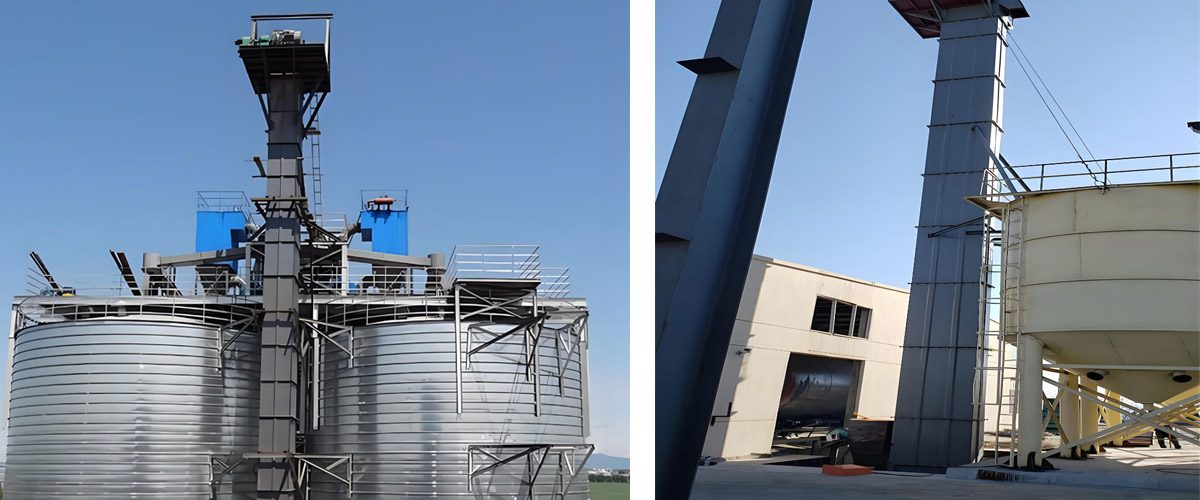1. What is a Bucket Elevator?
A bucket elevator is a vertical conveying system that moves bulk materials using:
Motor-driven chains/belts with attached buckets
Throughput capacity: 5-500 m³/hour (varies by model)
Common applications:
✓ Cement plants (high-temperature resistant models)
✓ Grain silos (food-grade stainless steel versions)
✓ Mining operations (heavy-duty designs)
Key Advantage:
“Bucket elevators provide 3-5x higher energy efficiency compared to pneumatic conveyors for vertical transport.” – CEMA Standard 504
2. Centrifugal vs Continuous Bucket Elevators
| Feature | Centrifugal Discharge | Continuous Discharge |
|---|---|---|
| Operating Speed | 1.5-4 m/s (high speed) | 0.5-1.2 m/s (low speed) |
| Discharge Method | Material flung by centrifugal force | Gravity flow through inverted buckets |
| Best For | Dry, free-flowing powders | Fragile or abrasive materials |
| Max Height | Up to 150m | Up to 80m |
Pro Tip:
For food-grade applications, continuous elevators reduce product degradation by 40% compared to centrifugal types.
3. Maximum Speed Considerations
The safe operating speed depends on:
Bucket type:
PE plastic buckets: max 3.5 m/s
Steel buckets: max 4 m/s
Material characteristics:
speed = √(0.9 × discharge radius × g)
(Where g = gravitational acceleration)
Warning Signs of Overspeeding:
⚠️ Excessive bucket wear (>3mm/month)
⚠️ Increased vibration (>7.1 mm/s RMS)
4. Troubleshooting Common Problems
4.1 Bucket Elevator Noise Issues
Collision Sounds:
Root Cause: Chain elongation >3% of original length
Fix: Adjust tension to 2-3% sag at midpoint using laser alignment
Bearing Failure:
Diagnosis: High-frequency noise at BPFO frequency
Solution: Replace with FAG 22308 series bearings + Kluber grease
4.2 Dust Leakage Solutions
| Leak Location | Seal Type | Installation Tip |
|---|---|---|
| Flange joints | Rubber gasket | Apply Loctite 515 sealant |
| Shaft exits | Labyrinth seal | Maintain 0.5mm clearance |
5. Maintenance Optimization
Monthly Checklist:
Chain inspection: Replace if elongation >3%
Sprocket wear: Measure with tooth caliper (replace if >25% worn)
Bearing lubrication: Use NLGI 2 grease (30% of free space)
Annual Tasks:
Laser alignment of drive train
UT thickness testing for wear parts

6. FAQ
Q: What is the lifespan of bucket elevator components?
A: Typical service life:
Buckets: 2-5 years (depends on material abrasiveness)
Chains: 3-7 years (with proper lubrication)
Q: How to increase bucket elevator capacity?
A: 3 proven methods:
Upgrade to deeper HS-type buckets (+15-20% volume)
Increase speed within safe limits
Reduce material adhesion with Teflon-coated buckets
By summarizing these common issues and their solutions, we hope to help you maintain your bucket elevators effectively and ensure its normal operation. If you have any other questions, feel free to consult us!

